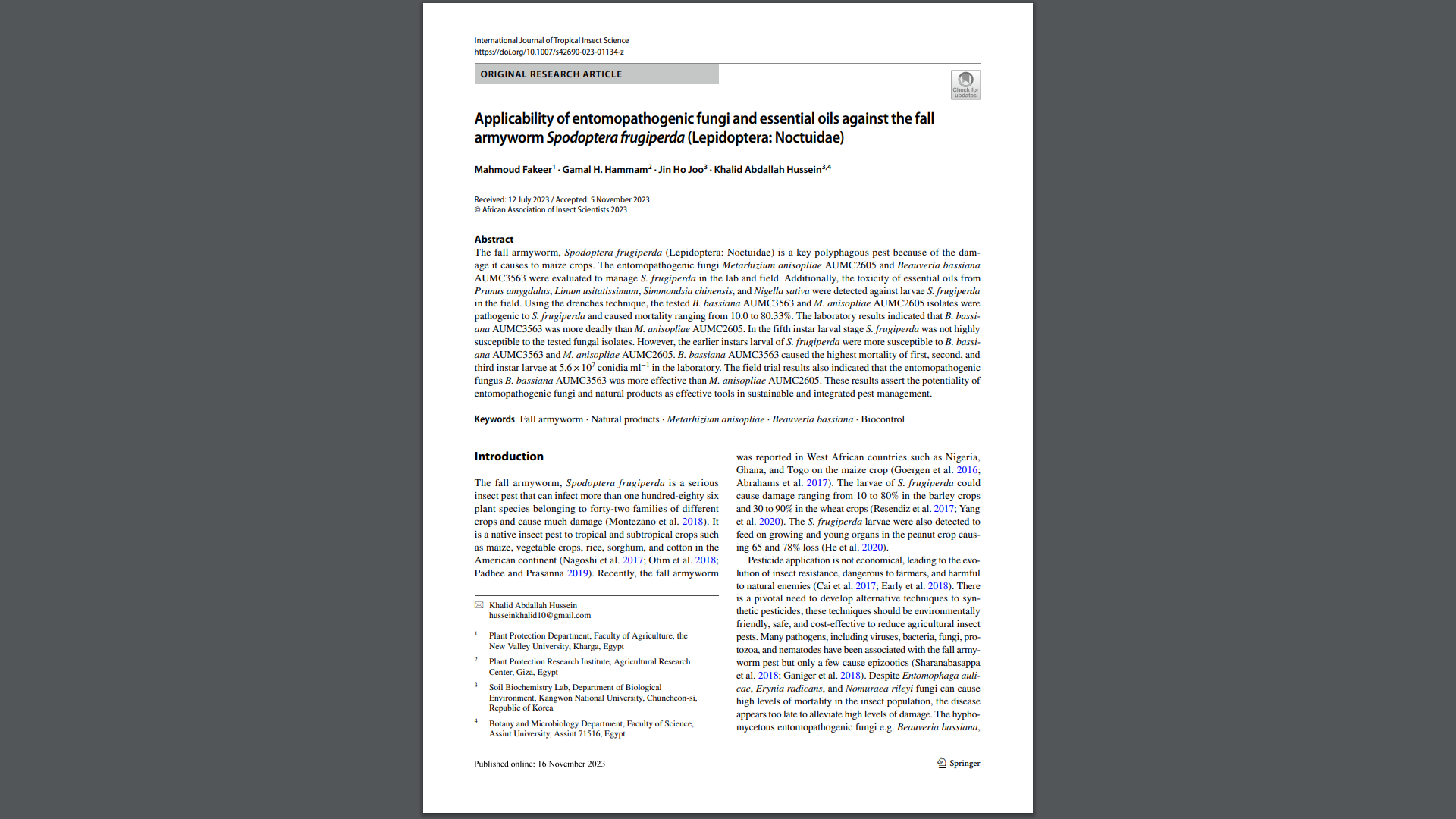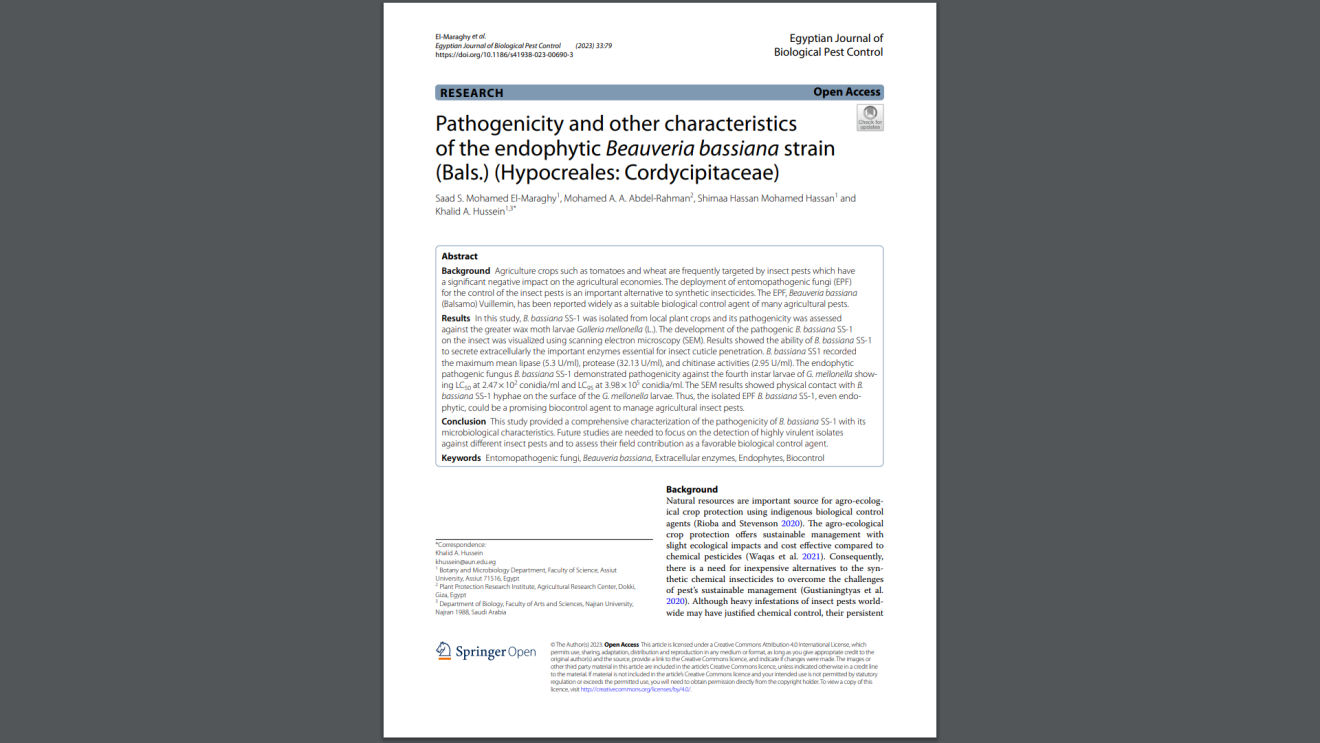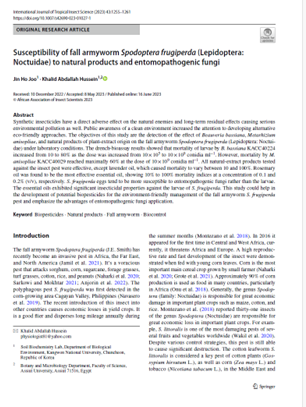Applicability of entomopathogenic fungi and essential oils against the fall armyworm Spodoptera frugiperda
The fall armyworm, Spodoptera frugiperda (Lepidoptera: Noctuidae) is a key polyphagous pest because of the damage it causes to maize crops. The entomopathogenic fungi Metarhizium anisopliae AUMC2605 and Beauveria bassiana AUMC3563 were evaluated to manage S. frugiperda in the lab and field. Additionally, the toxicity of essential oils from Prunus amygdalus, Linum usitatissimum, Simmondsia chinensis, and Nigella sativa were detected against larvae S. frugiperda in the field. Using the drenches technique, the tested B. bassiana AUMC3563 and M. anisopliae AUMC2605 isolates were pathogenic to S. frugiperda and caused mortality ranging from 10.0 to 80.33%. The laboratory results indicated that B. bassiana AUMC3563 was more deadly than M. anisopliae AUMC2605. In the fifth instar larval stage S. frugiperda was not highly susceptible to the tested fungal isolates. However, the earlier instars larval of S. frugiperda were more susceptible to B. bassiana AUMC3563 and M. anisopliae AUMC2605. B. bassiana AUMC3563 caused the highest mortality of first, second, and third instar larvae at 5.6× 107 conidia ml−1 in the laboratory. The field trial results also indicated that the entomopathogenic fungus B. bassiana AUMC3563 was more effective than M. anisopliae AUMC2605. These results assert the potentiality of entomopathogenic fungi and natural products as effective tools in sustainable and integrated pest management.




